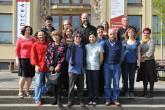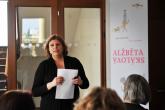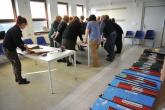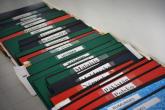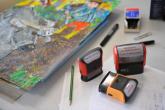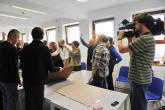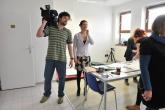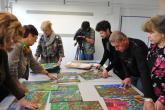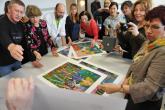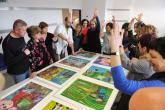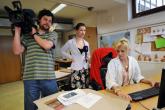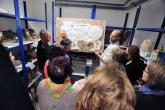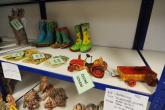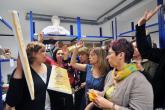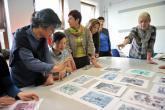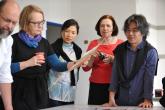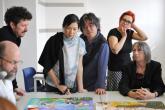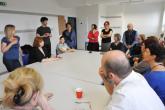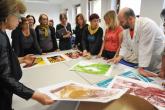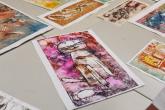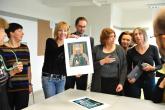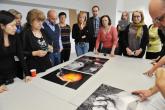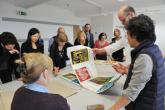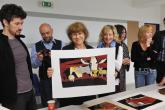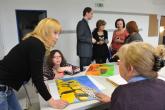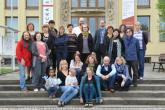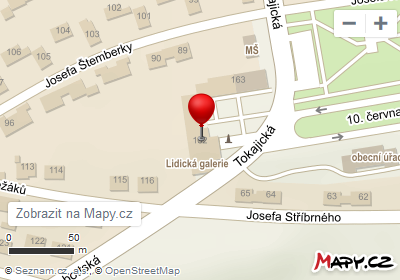Homepage » Archived editions » 42th edition » Panel of judges
Panel of judges
The expert panel of judges is made up of teachers of visual art branches at primary art schools and primary schools and of professional visual artists from Czech Republic and from abroad. The number of judges is not fixed, however, the panel has usually 13 - 23 judges. Many of them have engaged in the work with children for many years and also are judges in other art competitions which enhances their knowledge about the quality of art education of children in the schools in our country and abroad.
The panel of judges of the 42nd ICEFA 2014 sat in two rounds: on 27 – 29 March (selecting works) and 3 and 5 April 2014 (final awarding works) at the Lidice Gallery in Lidice.
Members of the ICEFA 2014 panel of judges
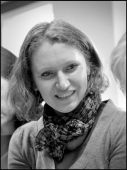
Jana Anděličová
teacher at the M. Podvalová Art School Prague 9 and Štítného Prague 3, Czech Republic
1. round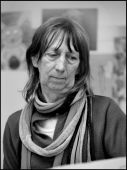
Emi de Graeve
visual artist, Manderfeld, Belgium
2. round
Čeněk Hlavatý
headmister of the Art School Mšeno, Czech Republic
1. and 2. round
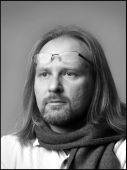
Martin Homola
photographer, Buštěhrad, Czech Republic
1. and 2. round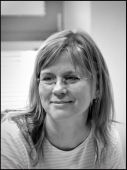
Zuzana Hrubošová
headmistress of the Art School M. Stibor, Olomouc, Czech Republic
2. round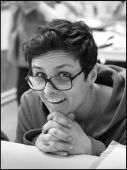
Ivana Junková
headmistress of the Art School Řevnice, Czech Republic
1. round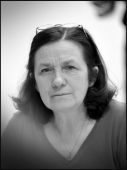
Hana Jurková
headmistress of the Private Art School Jeseník, Czech Republic
1. and 2. round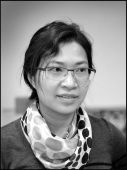
Iris Lau
the founder of the Promotion of Young Artists Foundation, Hong Kong, China
2. round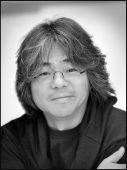
Henry Lau
the founder of the Promotion of Young Artists Foundation, Hong Kong, China
2. round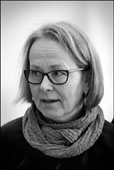
Raisa Laurila-Hakulinen
executive director of Art Centre for Children and Youth People, Hyvinkää, Finland
2. round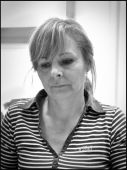
Helena Lisá
teacher at the M. Stibor Art School Olomouc, Czech Republic
1. round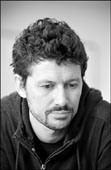
Irjo Malovaný
teacher at J. Kowalskeho Art School Bratislava, Slovak Republic
2. round
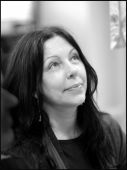
Renata Mečkovskiené
Art department coordinator and teacher at Art School of Trakai, head of conservation department at History Museum of Trakai, Lithuania
2. round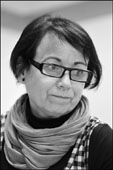
Hana Palacká
teacher at Art School Prostějov, Czech Republic
1. round
Pavel Rajdl
teacher at the Art School Kolín, Czech Republic
1. and 2. round
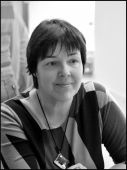
Ilze Rimicane
the Art chief of the youth centre Daugmale, Latvia
2. round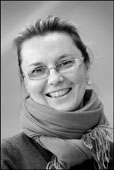
Ivana Schwarzová
teacher at the Art School Strakonice, Czech Republic
1. round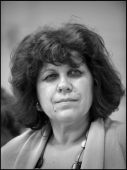
Jaroslava Spěváčková
teacher at the Art School Plzeň, Jagellonská, Czech Rebublic
2. round
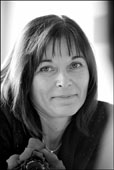
Romana Štajerová
teacher at the Art School Plzeň, Jagellonská, Czech Republic
1. round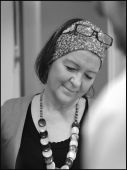
Zuzana Vlčková
art teacher at the Grammar School Kladno, Czech Republic
1. and 2. round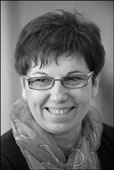
Alena Zupková
teacher at the Art School Háj ve Slezsku, Czech Republic
1. and 2. round
Report of the session of the expert panel of judges held on 27-29 March and 3-5 April 2014 to evaluate the 42nd ICEFA Lidice 2014
Members of the Panel of the 42nd ICEFA Lidice 2014
Chairman of the panel:
- Josef Zedník – visual artist, Olešná (1st and 2nd rounds)
Members of the panel:
- Jana Anděličová – teacher at Marie Podvalová Primary Art School Prague 9 - Čakovice and Primary Art School Štítného, Prague 3 (1st round)
- Čeněk Hlavatý – headmaster at Primary Art School Mšeno (1st and 2nd rounds)
- Martin Homola – photographer, Buštěhrad (1st and 2nd rounds)
- Zuzana Hrubošová – headmistress at M. Stibor Primary Art School Olomouc (2nd round)
- Ivana Junková – headmistress at Primary Art School Řevnice (1st round)
- Hana Jurková – headmistress at Private Primary Art School Jeseník (1st and 2nd rounds)
- Hana Palacká – teacher at Primary Art School Kravaře Prostějov (1st round)
- Helena Lisá – teacher at M. Stibor Primary Art School Olomouc (1st round)
- Ivana Schwarzová – teacher at Primary Art School Strakonice (1st round)
- Jaroslava Spěváčková – teacher at Primary Art School Plzeň, Jagellonská (2nd round)
- Romana Štajerová – teacher at Primary Art School Plzeň, Jagellonská (1st round)
- Pavel Rajdl – teacher at Primary Art School Kolín (1st and 2nd rounds)
- Zuzana Vlčková – teacher of arts at Gymnázium Kladno (1st and 2nd rounds)
- Alena Zupková – teacher at Primary Art School Háj ve Slezsku (1st and 2nd rounds)
Foreign members:
- Emi de Graeve – visual artist, Manderfeld, Belgium (2nd round)
- Henry and Iris Lau – the founders of the Gifted Artists Foundation, Hong Kong, China (2nd round)
- Raisa Laurila-Hakulinen – director of the art Centre for Children and Youth, Hyvinkää, Finland (2nd round)
- Irjo Malovaný – teacher at J. Kowalský Primary Art School, Bratislava (2nd round)
- Renata Mečkovskiené –coordinator of Arts Department and teacher at Art School Trakai, head of the restoration department of the Historical Museum Trakai, Lithuania (2nd round)
- Ilze Rimicane – art director of Children’s and Youth’s Centre Daugmale, Riga, Latvia (2nd round)
The panel of judges met in two equal sessions this year that took 6 days in total. This year proved again that the two-round evaluation system enables the panel to decide on individual works and collections in a peaceful atmosphere, without time pressure; the judges have more opportunities to discuss in groups and involve every member in the decision-making, it's time enough to record current assessment of entries per country of origin.
At suggestion of the Czech Commission for UNESCO, this edition was dedicated to the theme "Family Farming, or Our Garden and Field", which turned out to be so interesting for children and teachers from all over the world that there were a record number of participants this year - we received 27,868 entries from 77 countries. The entries dealt with the sub-themes in many interesting variations, children drew inspiration from animal husbandry, growing of crops as well as decorative plants and medicinal herbs, their treatment and preservation; there were also pictures of various pests, and agricultural machines and implements were rendered in many varied ways. The most popular subjects included farmers and farmwives, husbandmen and husbanwomen, farms, homesteads, and also tractors, fields, meadows and orchards; the judges peeked in stables and cowsheds, got acquainted with the life in the yard and pastureland, saw innumerable herds and flocks of domestic animals from the biggest to the tiniest. All works clearly showed that children know and love nature and animals, consider nature important and are happy to return to it even in today's technological time.
The panel of judges had an opportunity to select from collections sent in by many schools in different countries; the quality of such collections attested to the fact that there was a big potential in the theme, waiting only for a teacher to develop it when leading their pupils. The theme was developed in a variety of mediums and materials – among the assessed planar works were paintings and drawings, also unique prints were seen by the panel in various printmaking media (linocut, dry point, etching, blind pressing), less numerous were entries in computer graphics. As apart from previous years, more interesting photographs were sent in, some of which had outstanding artistic and technical characteristics. The panel of judges appreciated great imagination in spatial entries, creators of which used various materials - paper, clay, wire, glass, and textile, often showing their creativity in combining these.
In spite of variedness in approach, the panel of judges had to state that many entries lacked the characteristics accenting cultural differences of individual countries, although, as has become a tradition, countries of all continents were represented in the competition. This must be a result of globalization that permeates all spheres of life, but to some extent, also of a bit superficial approach to the theme on the part of some art teachers. The theme, which appeared to be easy to deal with, brought a number of entries that were not able to stand the competition. A lot of pictures showed that children are not able to use the visual possibilities of their chosen materials to the full. Also the theme and the offered subjects were used in a shallow way; in vain the judges sought for a greater enchantment with agricultural machinery, even the older, historical one, there were no agricultural feasts and traditions, e.g. harvest supper, grape and hop harvest. Neither supposed deeper thoughts about the theme were seen that would lead to expressing visually e.g. the close relationship with nature in subtle invisible processes, such as germination, sprouting and budding. The existing differences between schools showed how important the work of art teachers really is. The teacher who is able to support the talented, and above all, interested child in the process of art work by helping them to find a suitable subject, by recommending them that they should look beyond what is obvious, by offering them a wide variety of media, such teacher is an asset in developing the child's approach to artistic creation.
Generally, it should be stated, however, that from the multitude of entries, the judges were able to select very valuable works for the awards that addressed the theme in a fresh way, without old clichés and stereotypes; they were able to appreciate fine collections that achieved a high level of quality even in applying the individual media. In this respect it is necessary to commend the quality of arts in primary art schools and similar leisure-time facilities, both the Czech and the foreign ones. On the other hand, entries from ordinary nurseries, primary and secondary schools were slightly falling behind; they were characterized with descriptiveness, static character and a tendency toward certain glossiness. Even here the teacher's skill plays its role, however, so does material and technical equipment and time limitations. Nevertheless, as the panel of judges stated further, the year-by-year increasing number of participating schools and countries attests to the fact that children are not moving away from artistic activities. Especially the countries with a long tradition of art schools and teaching art at primary and secondary schools maintain their high standards. The interest in participating in the ICEFA Lidice shows that these educational traditions should be not only maintained but also developed by new critical approaches related to changes in social life, particularly to the speedy integration of new technologies into children's life.
Also this year some indisputably fine works of art had to be excluded as they did not meet the conditions of the competition, nevertheless, there were less of such entries as against past years. The most common problems included incomplete information on the creator of the entry, a copy being sent in instead of the original, exceeding the maximum dimensions, unnecessary and unsuitable makings-up (works on canvases, framed works or mounted on colour papers), diversions from the theme.
Summary on entries in total
- Number of entries in total: 27,868
- Number of participating countries: 77
- Number of participating organizations: 1,907
- Number of awarded organizations: 433
Out of the total of 27,868 entries from 77 countries, 1,517 were awarded a prize by the panel of judges and 200 received medals.
Summary on foreign entries
Number of foreign entries: 18,494 (16,873 paintings, 500 photographs, 163 items of ceramics, 675 mixed media items)
Number of participating countries: 75 (apart from Czechia and Slovakia)
Number of participating organizations: 1,441, number of awarded organizations: 249
This year, works by children from 77 countries were registered, many of which were represented in this competition for the first time (Cambodia, Kosovo, Laos, Malta, Myanmar, Nigeria, Oman, East Timor), other countries had more participating schools and children than in previous years (e.g. Montenegro, Iran, Turkey). Out of 18,494 foreign entries, 622 won prizes including 79 medals (51 medals to individuals and 26 medals to schools for their collections). The most of them received children from China and Hong Kong, Latvia, Lithuania, Malaysia, Russia and Ukraine.
In the foreign entries tempera and acrylic paintings and various types of pastel drawings prevailed, supplemented by works in less common and more difficult media (aquatint, etching and precisely made drypoint) as well as aquarelle paintings and detailed pencil drawings, which were welcomed and warmly appreciated. Regrettably, big collections showed an uneven level of quality, although also this year highly accomplished works were among them; some of the entries were unnecessarily large, with too much colour without purpose or unsuitably coloured grounds and some of the mixed-media combinations did not work out well.
On the other hand, as to the approach to the theme, those works should be praised that reflect the aspiration of children to depict in an interesting way some specifics of agricultural activities in their countries, as it was the case with works from Singapore, Srí Lanka and Armenia. Again this year, an even collection of Hong Kong based art studio Simply Art distinguished itself by a top quality, pleasantly surprising with a variety of subjects, mastery in drawing, including traditional brush-drawing, and fresh use of colour. As in previous years, outstanding results in the field of photography were achieved by Croatia, but a significant improvement in the depth of the message and the work with light and technique was seen in the collections of photographs from Russia and Ukraine and other countries, some of which had sent their entries to the exhibition for the first time. As has become a tradition, first-class spatial works were presented by Latvia.
Also this year sparse and artistically rather poor collections represented especially countries of Western and Northern Europe (France, Germany, Italy, Malta, the Netherlands, Norway and Sweden), which can probably be attributed to a different approach to art education than that in Central and Eastern Europe. Small and rather poor collections came also from some African countries and certain countries of Asia that are new to the competition; a significant factor in that, however, must have been a lack of art material and generally more difficult conditions for artistic activities.
Finally, it should be noted that a big credit for involving children from remote and poor places, e.g. from China, Indonesia, Cambodia, Laos, Myanmar, Tunisia and East Timor, goes to the staffs of Czech embassies in the respective countries, including the ambassadors. Representatives of Czech embassies visit children in their poor living conditions, support them with art material and organize transport of works to Czechia. Although many of this small-sized works went without an award, the panel of judges and the organizers appreciate this help and cooperation very much and thank for it
Summary on Czech entries
Number of entries: 5,193 (3,884 paintings, 160 photographs, 500 items of ceramics, 649 mixed media entries)
Number of participants: 344 (46 nurseries, 95 primary art schools, 29 special schools, 32 hobby groups and child and youth centres, 12 secondary schools, 26 individuals)
Number of awarded organizations: 344 (9 nurseries, 73 primary art schools, 10 special schools, 14 child and youth centres, 1 secondary school, 4 individuals)
Compared to the last year and previous years, this year saw many new participating schools.
Czech children sent in 5,193 entries this year and received 687 prizes including 88 medals (66 medals to individuals and 28 medals to schools for their collections).
As in the last year, planar works by children from primary art schools (Blatná, Háj ve Slezsku, Hradec nad Moravicí, Humpolec, private school Jeseník, Kolín, Kroměříž, Most – Moskevská street, Mšeno, Nové Město pod Smrkem, Olomouc, Opava -Solná street, Písek, Plzeň - Jagellonská and T. Brzkové streets, Praha 3 - Štítného street, Praha 5 – Štefánikova street, Prostějov and Strakonice) were a great success, primarily thanks to systematic and professional work of teachers. All the more, however, the panel of judges appreciated the skilful work of teachers in primary schools (Červené Pečky, Opava – Šrámkova street, Sedmikráska Rožnov pod Radhoštěm), special schools (Practical Primary School Brno – Vídeňská street, Centrum Arpida České Budějovice, Centre of Social Services Horizont Protivín, Domov Raspenava) and children and youth centres (DDM Český Krumlov, Art Workshop Paletka Plzeň).
Much to delight of the panel of judges, photographs from Czech schools returned to the competition; works from Primary School Řevnice surprised again by their professional look. As to the spatial works, the panel of judges was pleased with the collection of 3D entries from PAS Prostějov, a set of domestic animals of ceramics from PS Červené Pečky, collections of ceramics from PAS Postoloprty and PAS Kolín, mixed media entries from PAS Strakonice, glass flowers from PAS Mšeno and glass relievos from PAS Litvínov.
In general, a commendation is due to teachers and children in primary art schools, some of which participate regularly in the exhibition, receiving awards every year; they maintain their standards and sometimes surprise with uniqueness and freshness of their approach to the theme. Nevertheless, the panel of judges noticed a slight decrease in the quality of works in comparison with previous years even among primary art schools, which may have been caused by participation of new schools that do not have any experience with the Lidice competition. The quality of works from primary and secondary schools was poorer and showed significant differences between individual schools; secondary schools sent in entries without any idea, and, in several cases, even unfinished. Therefore, the panel of judges recommends that teachers who send in works from their schools to the competition for the first time, should familiarize themselves with previous year's entries as a benchmark for quality.
Summary on the Slovak entries:
Number of entries: 2,539 (2,308 paintings, 21 photographs, 12 items of ceramics, 198 mixed media entries)
Number of participating schools: 123 (13 nurseries, 73 primary art schools, 10 special schools, 2 secondary schools, 1 individual participant)
Number of awarded schools: 50 (4 nurseries, 6 primary schools 36 primary art schools, 4 special schools)
Out of 2,539 entries 209 won a prize, including 23 medals (15 individual medals and 8 medals to schools for their collections). Among the Slovak schools the most successful were J. Cikker PAS Banská Bystrica, PAS Holíč, PAS Kežmarok, PAS Košice Kováčska, PAS Martin, PAS Skalica, PAS Spišská Belá, Private PAS and K. Pádivý PAS Trenčín.
Besides very fine collections of prints (colour linocuts and drypoints) from primary art schools (Spišská Belá, Banská Bystrica, Holíč, Skalica), some works from primary art schools showed a poorer quality both in selection of subjects and in artistry. The same holds for works of several Slovak nurseries, and primary and secondary schools.
Prize of the Panel of Judges
From among the Czech schools, the Prize of the Panel of Judges, awarded to schools for their persistent, purposeful and excellent work, was given to Vladimír Ambros Primary Art School Prostějov, which presented itself with a rich and interesting collection of spatial and planar works. The Prize of the Panel of Judges for foreign schools was awarded to Photostudio MIG at Municipal Palace for Children and Youth Creativity in Doneck, Ukraine, for their unparalleled collection of photographs. It should be noted that both schools have been sending in their excellent works regularly for many years and have been receiving prizes for them.
Conclusion
Finally, we would like to thank all children who created so many works, putting in them their imagination and skill. It was not possible to award all the works, nevertheless, we believe that pleasure of creation is more important than the prize itself. Our thanks go to all teachers who worked with children, developing their visual sensitivity, teaching them new artistic media, providing organizational assistance to them so that their works could arrive safe and in time at the Lidice Memorial to be assessed by the panel of judges in stiff competition of this year's edition.
The international panel of judges enjoyed excellent working conditions prepared by the staff of the Lidice Memorial, for which all members of the panel would like to thank. Not only thanks to their diligence, selflessness and excellent cooperation, but also thanks to a new computer programme that made registration of entries easier and quicker, the work of the panel of judges went smoothly, the judges were able to focus exclusively to the selection, assessment and awarding of entries. There was time enough to exchange experiences and opinions that are enriched every year by domestic and foreign newcomers.
A new and enriching element of this year’s sessions of the panel of judges was the possibility of visits to the sessions, in which guests were able to see the work of the panel of judges and the system for evaluation of entries. This opportunity was used by several teachers from other schools, Director of Museum and Gallery Department of the Ministry of Culture Mgr. Pavel Hlubuček and representatives of sponsors and partners. Also media showed interest in the work of the international panel of judges, drawing attention to the competition and giving the public a sense of the challenging work of the panel in this record-breaking edition in discussions with members of the panel for public TV-channel ČT1 and Český Rozhlas broadcasting company.
Josef Zedník, Chairman of the panel of judges of the 42nd ICEFA Lidice
Zuzana Vlčková, a member of the panel of judges of the 42nd ICEFA Lidice
Ivona Kasalická – Head of the Lidice Gallery and Curator of ICEFA Lidice
Portraits of jury members and photos from the jury: © Martin Homola


]m.jpg)
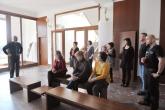
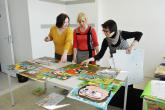
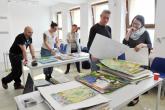
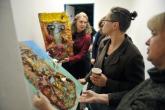
]m.jpg)
]m.jpg)
]m.jpg)
]m.jpg)
]m.jpg)
]m.jpg)
]m.jpg)
]m.jpg)
]m.jpg)
]m.jpg)
